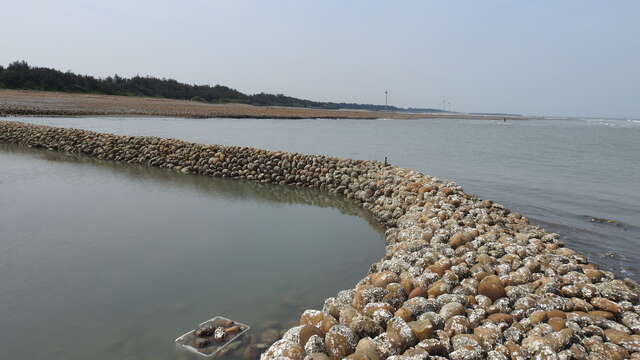Xinyu Century-Old Stone Weir Group Introduction
Instead of just watching the sea, come to Taoyuan's Xinshi for a trip to the stone weir experience. In addition to wading through waves and enjoying the ocean view, take a walk through the century-old stone weir cluster, known as the "Great Wall at Sea." This intertidal zone with a history of over 300 years is not just a seaside landscape but also a series of legendary cultural memories. The seemingly unremarkable stacks of stones hold the wisdom of our ancestors who utilized local materials and coexisted with nature; they still stand quietly today, telling stories of resilience and the passage of time. The century-old stone embankment is a reflection of fishing wisdom. The origins of the Xinshi stone weirs can be traced back to the Qing Dynasty, constructed by Han ancestors using hand-placed pebbles, extending several hundred meters in length, with records of catches reaching 1,000 Taiwanese jin (approximately 600 kilograms)! This method of fishing, which involves guiding fish into the weirs during high tide and trapping them as the tide recedes, is both environmentally friendly and clever. The intertidal secret, an ecological treasure. Don't think that the stone weirs are just for fishing; they are also an excellent spot for observing coastal ecology. Common sightings on the stone embankments include stone oysters, helmet conchs, and crabs, with sea anemones blooming beautifully during high tide. This rich ecological landscape means that the Xinshi stone weirs are not only culturally significant but also a practical outdoor classroom for parents and children to explore nature. Revitalization and the resurgence of the Great Wall at Sea. Over time, the original 40 or so stone weirs have dwindled to just 9 remaining. To protect this precious cultural heritage, the Taoyuan Stone Weir Association launched a restoration project in 2019, mobilizing over 6,000 people to restore the weirs using traditional manual construction techniques. By 2023, they successfully restored the 9 stone weirs in "Oyster Alley," totaling 1,941 meters, all of which are now registered as cultural landscapes of Taoyuan City. This is not just a rebirth of the stone weirs but a joint guardianship of local culture. Dancing with the sea, a new cultural experience from a high perspective. Coming to Xinshi is not just about visiting the stone weirs; you can also participate in guided tours led by fishermen to personally experience the fun of traditional fishing. As the tides ebb and flow, wander along the stone weir paths and fish with nets, feeling as if you're side by side with ancestors from a hundred years ago. Additionally, there is a two-story observation platform and a 200-meter observation path on-site, allowing visitors to gain a panoramic view of the stone weirs. This not only provides safety and comfort but also adds a visual highlight to the overall journey, attracting more people to this coastal secret to experience the charm and grandeur of stone weir culture.





































